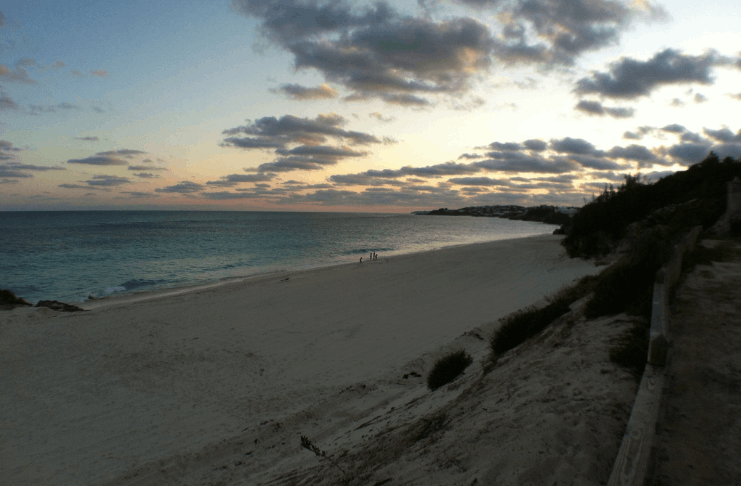Schools in extreme locations worldwide challenge traditional notions of education. This article explores how ten such schools adapt to their unique environments.
It highlights their innovative approaches and the resilience of their communities. Understanding these schools offers a fresh perspective on global education.
Unique Features of Exceptional Schools
Schools in extreme locations worldwide offer more than just education; they represent survival, innovation, and resilience. These institutions adapt to harsh, often isolated environments, making learning accessible in places where conventional schools cannot thrive.
They mold their curriculums, not educate and equip students with skills to tackle local challenges. These schools become community centers, reflecting the culture and needs of their surroundings.
They stand as testaments to human adaptability and the universal value of education. In exploring their stories, we gain insight into diverse educational landscapes and the enduring spirit of learning.
Floating School in Bangladesh
In Bangladesh, a floating school offers education amidst the waterways. It’s a creative response to frequent flooding.
Challenges in Waterworld
Bangladesh’s floating school faces unique environmental challenges due to its location on ever-changing waterways. Frequent flooding turns conventional schooling into a challenge, with many children not attending land-based schools regularly.
The water’s unpredictability demands constant adaptability and resilience from students and teachers. This school must contend with a floating structure’s logistical issues and ensure consistent educational delivery.
It operates in a region where water is both a lifeline and a threat, making its role in the community vital. The school is a beacon of hope in an environment where traditional education systems struggle.
Operation on the Waves
Operating a school on water requires innovative strategies and adaptability. This floating school utilizes boats for transport and classrooms, ensuring education continues despite flooding.
It integrates local knowledge about water navigation and safety into its curriculum. The school’s structure is designed to withstand the water’s ebb and flow, ensuring student stability.
Teachers here are not just educators but also navigators of the waterways. This unique operational model ensures that education is not interrupted by the natural challenges of the region, offering a consistent learning environment.
Ice School in Siberia
Deep in Siberia, an ice school braves the frigid climate to educate. It’s a symbol of endurance in extreme cold.
Surviving Siberian Cold
It operates under extreme cold conditions, where temperatures can plummet to life-threatening lows. This environment presents unique challenges, from ensuring the physical safety of students and staff to maintaining a conducive learning environment.
The school must regularly combat issues related to frozen infrastructure and limited daylight. Heating and insulation are critical, not just for comfort but for survival.
In such conditions, even simple tasks like commuting to school become arduous. The school epitomizes resilience, teaching academics and survival in the coldest climates.
Adapting to Arctic Learning
Educational adaptations in this Siberian ice school are crucial for coping with the cold. The curriculum includes practical skills for living in an extreme climate, like understanding hypothermia and frostbite prevention.
The school’s schedule is adjusted to accommodate shorter daylight hours, maximizing the use of natural light. Indoor activities are emphasized to keep students active and warm.
The infrastructure is specially designed to retain heat and withstand the harsh weather. Teachers here are skilled not only in their academic subjects but also in ensuring the well-being of students in this extreme environment.
Cave School in China
In China, a cave school offers a unique educational setting. It’s a blend of history and learning in a confined space.
Significance of the Subterranean
This cave school in China is nestled in a historically and geographically significant location. The cave, formed over millennia, provides a natural shelter for education.
This unconventional setting is steeped in local history, directly connecting students to their heritage. The geographical conditions of the cave present both challenges and opportunities for learning.
Limited space and natural light have dictated the school’s unique design and structure. This educational setup preserves and celebrates the region’s historical significance.
Learning in Limited Spaces
Teaching methods in China’s cave schools are adapted to the constraints of the space. The cave’s natural acoustics are utilized for effective verbal communication.
Limited space encourages close interaction and collaboration among students. Innovative use of available light and space ensures a conducive learning environment.
The curriculum here includes lessons on the cave’s geological and historical importance. Teachers are adept at maximizing the cave’s features for educational purposes, turning limitations into learning opportunities.
Amazon Rainforest School
In the heart of the Amazon Rainforest, a school thrives amidst lush biodiversity. It’s an educational oasis in a challenging yet vibrant ecosystem.
Navigating Rainforest Challenges
This school in the Amazon confronts unique accessibility issues due to its remote location. Travel to and from the school often depends on river routes, reflecting the rainforest’s complex geography.
The rich biodiversity around the school presents both a learning opportunity and a challenge in maintaining a balance with the local ecosystem. Here, education goes hand-in-hand with understanding and respecting the fragile environment.
Local Knowledge in the Curriculum
The curriculum of this rainforest school heavily incorporates local knowledge and traditions. Lessons are designed to blend traditional academic subjects with practical skills essential for rainforest life.
Students learn about the diverse flora and fauna of the Amazon, gaining an understanding of ecological conservation. This approach ensures that education is relevant and deeply connected to the student’s immediate environment.
Himalayan Mountain School
In the Himalayas, a mountain school is a testament to educational resilience at high altitudes. It’s an environment where learning meets the sky.
Adapting to High Altitudes
The Himalayan mountain school faces unique altitude challenges, including thinner air and extreme weather. To combat these, the school has developed specialized infrastructure and routines to ensure students’ and staff’s well-being.
Techniques for dealing with altitude sickness are crucial to the school’s health education. The school’s operation reflects a blend of traditional learning and adaptation to high-altitude living.
Community’s Role in Education
Community involvement is pivotal in this mountain school. Local villagers often participate in school activities, bringing a wealth of cultural and practical knowledge.
This collaboration strengthens the school and community bond, ensuring that education is tailored to local needs. The school thus becomes a center for community growth and cultural preservation.
Saharan Desert School
In the vast Sahara Desert, a school navigates the extremes of heat and sand. It’s an emblem of endurance in a sea of sand.
Enduring the Desert’s Heat
The Sahara school deals with intense heat and frequent sandstorms. Architectural design focuses on maintaining a relaxed environment within the school, utilizing traditional and innovative methods.
The school schedule is adapted to the desert’s climate, with activities timed to avoid the hottest parts of the day. Managing these environmental challenges is a daily reality for students and educators, teaching resilience in the face of nature’s extremes.
Teaching Water Conservation
Water conservation is a crucial aspect of the curriculum in this desert school. Students learn practical techniques for maximizing water usage efficiently.
The school practices what it teaches, implementing water-saving measures daily. These lessons in conservation are vital, equipping students with skills essential for life in the desert.
Underground School in Australia
Below the Australian outback, an underground school offers a unique educational experience. It’s a world of learning beneath the earth’s surface.
Why Underground?
The underground school in Australia was established due to extreme surface temperatures and the need for a stable environment. The underground setting provides natural insulation against the harsh climate above.
Despite the challenging Australian outback conditions, this unique location offered a comfortable and consistent educational setting. The school is a creative solution to environmental extremes, providing a stable learning environment.
Unique Environment for Learning
The underground setting of this Australian school presents unique environmental conditions. Natural cave formations contribute to the school’s aesthetic and educational value.
The absence of natural light has led to innovative lighting solutions, creating a conducive learning environment. This school exemplifies how unconventional environments can be transformed into effective educational spaces.
Island School: A Unique Setting
On a remote island, a school operates in isolation from the mainland. It’s a place where education meets seclusion.
Isolation’s Educational Impact
Isolation significantly impacts this island school’s operation. Limited access to resources means relying on local materials and knowledge.
The school becomes a community hub where education intertwines with local culture and practices. This isolation fosters a unique educational model deeply rooted in the island’s needs and environment.
Staying Connected
Despite its remoteness, the school strives to maintain connectivity with the outside world. Satellite technology and the internet play key roles in bridging the geographical gap.
This connection ensures students are not left behind in global education trends. The school’s efforts highlight the importance of balancing local and global knowledge.
Arctic Circle School: A Challenging Environment
In the Arctic Circle, a school endures the harsh polar climate. It’s a beacon of learning amidst the extremes of light and darkness.
Coping with Polar Extremes
Here, the school contends with extreme variations in daylight and darkness. These conditions affect not only the school’s schedule but also the mental well-being of students and staff.
Adaptations in lighting and infrastructure are essential to create a consistent learning environment. The school’s resilience in this challenging setting is a testament to the adaptability of education.
Culture and Environment in Curriculum
Cultural and environmental education is central to this Arctic school’s curriculum. Students learn about indigenous cultures and their harmonious relationship with the polar environment.
Environmental studies focus on the unique Arctic ecosystem, teaching students about the importance of conservation. This integrated approach ensures that education is relevant and respectful of the local context.
Nomadic School in Mongolia: Adapting to Movement
In Mongolia, a nomadic school travels with its community. It’s a dynamic educational model, adapting to a constantly moving lifestyle.
Embracing a Nomadic Lifestyle
This school adapts to the nomadic lifestyle of its community. Education is designed to be mobile, with tents and portable materials used for classrooms.
The school’s schedule and location change with the community’s movements. This flexibility ensures continuity in education despite the transient nature of life in this setting.
Flexible Teaching and Learning
Flexibility is key in this Mongolian nomadic school’s teaching methods. Lessons are tailored to suit the ever-changing environment, incorporating practical skills necessary for nomadic life.
Teachers adapt their teaching styles to suit various locations and circumstances. This approach reflects the necessity of adaptability in both teaching and learning in a nomadic context.
Final Insights on Exceptional Schools
Exploring schools in extreme locations worldwide showcases remarkable resilience and adaptability. Each unique setting highlights education’s versatility and universal importance.
These schools exemplify overcoming geographical and environmental challenges. This journey underscores the extraordinary spirit of learning under any circumstance.












